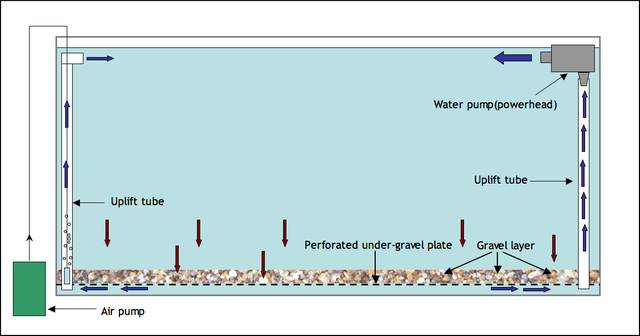How should I set up an undergravel filter in my aquarium?
The most important thing to bear in mind at the outset is that the undergravel filter plate needs to cover the entire floor area of the aquarium, with the gravel then being tipped in on top. The gravel particles must also be relatively coarse, as the aim is for water to flow down through this filter bed.An undergravel filter needs time to become effective because it relies on beneficial bacteria to break down harmful ammonia via nitrite to less toxic nitrate, with this process being described as biological filtration. Their numbers must build up over the course of several weeks.
In a new aquarium, you can help this process by seeding the filter bed, using one of the products which contain a bacterial culture for this purpose. The filter should then be operating at maximum efficiency after approximately two months.

Functioning of the filter
The air pump used in association with the gravel filter must be left on constantly because this supplies the oxygen to the bacteria in the filter bed which they need to function effectively. As David Midgley's drawing shows, water passes down through the filter bed, and then is returned to the aquarium.
With any type of filter, including an undergravel filter, it is very important not to overfeed the fish. Otherwise, the filter will become overloaded with uneaten food, which will then pollute the water, adversely affecting the health of the fish. Regular monitoring of water quality is very important, especially in the early stages, until the filter is operating at maximum efficiency.
When you are carrying out a partial water change in the aquarium every two weeks or so, use one of the aquarium cleaners which serves as a siphon as well, to remove the mulm from the gravel. They are very simple to operate, and clean the gravel effectively with minimal disturbance to the tank itself. This should lead to improved functioning of the filter bed, and helping directly to improve the water quality in the aquarium.